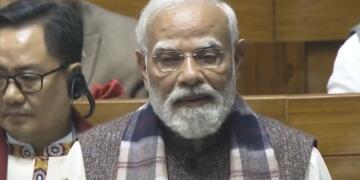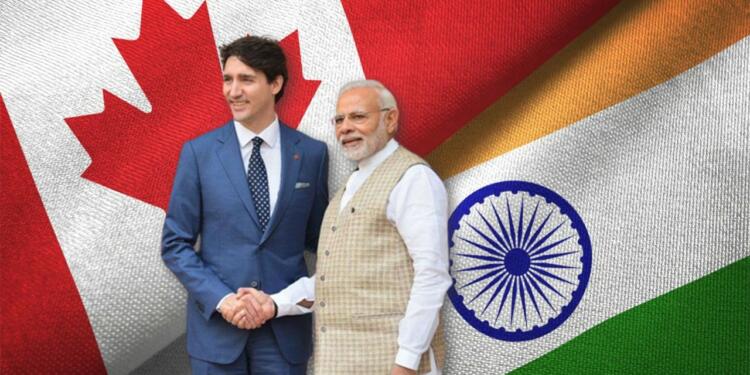Indo-Pacific policy: China has historically been a minor player in the Indo-Pacific, with the West, particularly the United States, dominating the region. On the contrary, the beginning of the second decade of the 21st century saw a tectonic shift in the power structure of the Indo-Pacific.
China, which was previously slithering like a snake under US hegemony, has started to challenge its dominance in the region. The changed world order has forced the United States and its ally Canada to take on the additional responsibility of finding a new strategic partner to counter the Chinese threat in the region. Consequently, the Canadians are eyeing a new strategic partnership with India, but the question is, “Can India really put its eggs in the Canadian basket?”
Tectonic shift in Canadian Indo-Pacific policy
The tectonic shift in the foreign policy with respect to India can be best illustrated from the fact that the Canadian flight to India is going to get flooded with diplomatic visits to New Delhi from the start of 2023. As many as eight cabinet ministers, along with Prime Minister Justin Trudeau, are gearing up to land in New Delhi in the coming month.
The flurry of visits to India, amidst the withering ties with China, is surprising as Trudeau’s previous stance on India has not been that cordial. Trudeau’s previous visit to India was clearly a flop, as the diplomatic channel in India categorically distanced itself from him.
However, much of the previous tension between India and Canada owed it to the “unnecessary nose-poking” of Trudeau and his administration in the domestic matters of India, along with their ‘political alignment with the anti-India Khalistan supporters.’ On the contrary, the new Indo-Pacific strategy of Canada seeks to prioritise ‘constructive engagement’ with India.
Therefore, indicating a new strategic partnership in the making with two significant giants of the Indo-Pacific coming closer, keeping aside the bitter past. As per Ajay Bisaria, a former high commissioner of India to Ottawa, the new year of ‘2023 should be the year of a required reset in the Indo-Canadian strategic partnership’ as a consequence of which a stronger geo-political and geo-economic alignment should result in the times to come.
Also read: If Canada needs to thrive, it needs to back India now!
New Indo-Pacific Strategy of Canada
The newly released Indo-Pacific strategy of Canada has designated four regions to focus on: China, India, the North Pacific (Japan and Korea), and ASEAN as “a new horizon of opportunity.” Evidently, Ottawa recognises that the greatest diaspora in Canada is made up of “people of Indo-Pacific origin,” of which it has named 40 nations. However, the Indo-Pacific policy document has set out specific and significant goals with the collaboration of India, which has turned out to be the biggest surprise for everyone.
Conversely, the geopolitical experts suggest that the prime reason behind the move is the alignment of Canada’s ‘closest allies, including the United States, the European Union, Germany, France, and the United Kingdom,’ with an increased military and strategic presence in the region. Therefore, Canada was forced into the move in order to keep up with the changing needs of the global supply chain.
That is to say, the relationships that Canada, its allies and partners have with the Indo-Pacific countries are likely to impact every aspect of the Canadian lifestyle, including their national security, economic prosperity, respect for international law, democratic values, public health, environmental protection, the rights of women, and human rights.
Also read: Canada will soon be Khalistan, Lebanon is a striking example
More so, the Indo-Pacific is quickly becoming the global centre of economic dynamism and strategic challenge with the growing footprint of China, which is shattering the existing world order with its “Imperialistic motives.”
Thus, the renewed strategy is aimed at rejuvenating ties with India and other South Asian nations in order to get the best out of the supply chain and move beyond the hegemonic control of the US and China alike with a better and longer-term association with other Indo-Pacific powers.
Therefore, it suggests that Trudeau is slowly and steadily trying to lessen his interdependence on China, which happens to be the second-largest trading partner and a priority for the Trudeau administration.
Also read: Hindus are under siege in Canada and Trudeau is the chief enabler of it
China to lose, India to gain in Canada
Canada’s approach to China needs to evolve if the new Indo-Pacific Strategy is to be successful. The Chinese as a global force are becoming more disruptive, and their relationship is getting bitter with almost all previous partners owing to their self-centred and expansionist approach.
Owing to which, the role of India becomes crucial to the strategic success of the new Canadian Indo-Pacific policy that has categorically acknowledged the growing strategic, economic, and demographic significance of India in the Indo-Pacific region.
Also read: The Truckers episode in Canada is Trudeau’s political Waterloo
The renewed Canadian approach is expected to be based on ‘ shared tradition of democracy and pluralism,’ with ‘joint commitment to a rules-based international system and multilateralism,’ whereby, ‘mutual interest’ and ‘commercial relationship’ extensively promoting ‘people-to-people connections.’
Evidently, ever since the Foreign Minister Mélanie Joly enunciated the strategy, it has been termed as long ‘overdue,’ and ‘comprehensive,’ whereas others describing it as ‘inadequate.’ However, the Indo-Pacific policy, despite all its optimism and changed stance towards India, is seen in a negative light with respect to India, owing to the previous stance of Trudeau and his administration, given the “domestic compulsion of Khalistani support” and overplaying at the hands of “Chinese Imperialism.”
Support TFI:
Support us to strengthen the ‘Right’ ideology of cultural nationalism by purchasing the best quality garments from TFI-STORE.COM





























